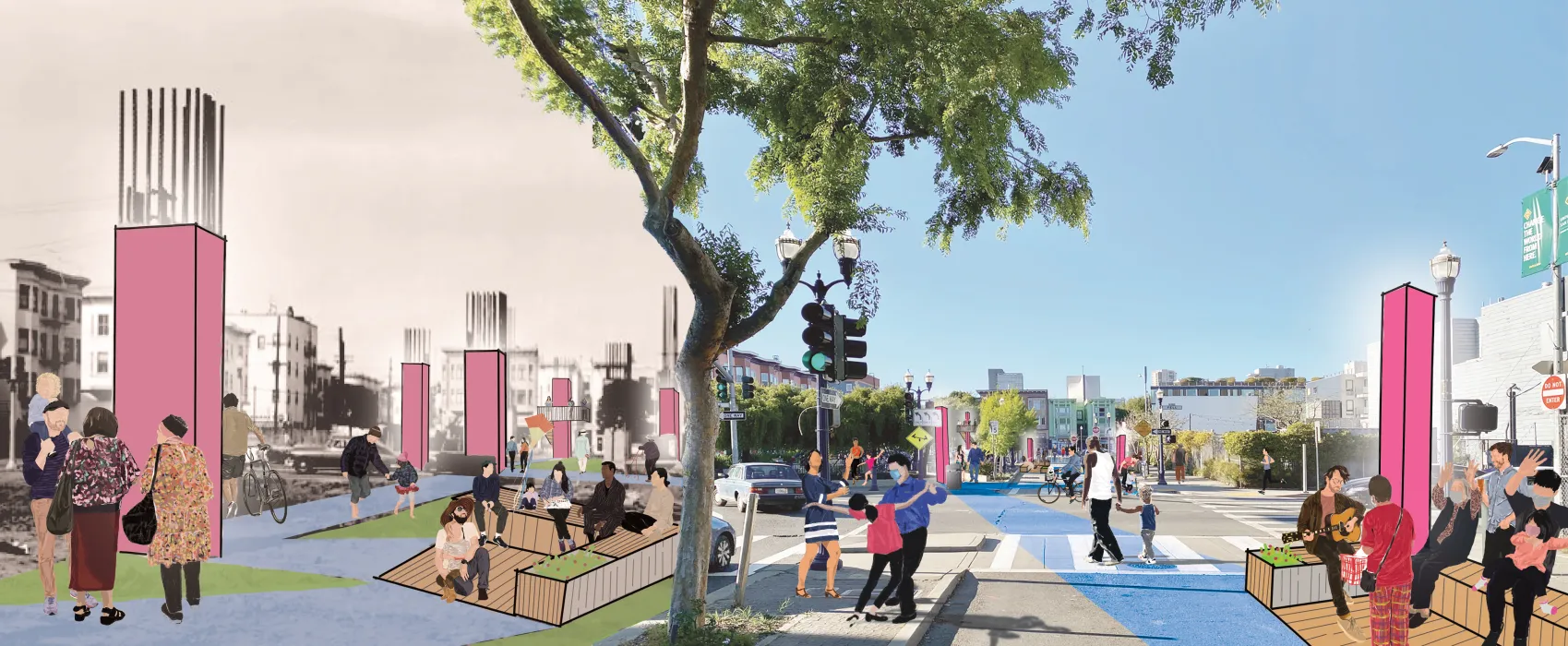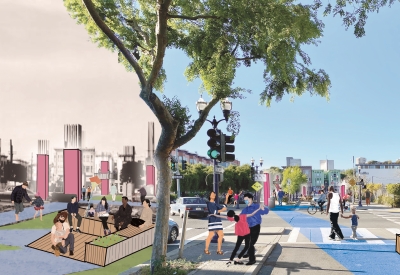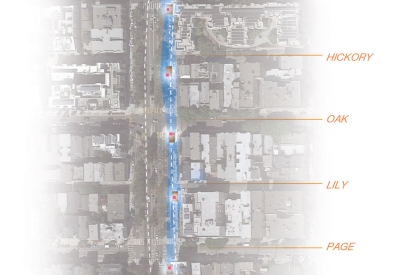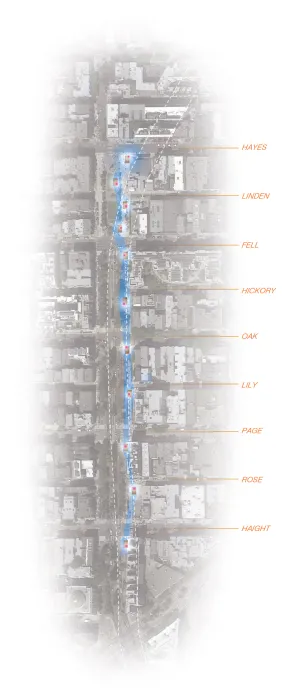San Francisco CA | Unbuilt
The People’s Lane is a distributed urban memorial that etches the history of committed activism against the divisive effects of the Central Freeway along the structure’s former path.
Just as all advocates must, this installation learns from what came before it. It celebrates the accomplishments of the Hayes Valley community— including Sue Bierman, Robin Levitt, and Patricia Walkup—whose grassroots activism fought against a series of voter propositions to bring back the monumental Central Freeway that drained life from Hayes Valley streets. They fought in different eras, but all opposed the idealized 1950s view that cities were just stopping points linked by freeways on the way home to the suburbs.
The construction of the Central freeway snatched up more than seven acres in the Hayes Valley neighborhood. Reclaiming that land was the first step toward renewal. These were not easy victories— opponents with a shorter view of San Francisco take the city’s enticing walkability for granted, not realizing that it was hard won and preserved by caretakers of the public realm.
The long civic process of removing the Central Freeway was an act of love. It was a declaration of urban renewal and an affirmation of the city as a place for people, community, and chance encounters—rather than a mere conduit for cars. The People’s Lane is an intervention that celebrates and commemorates this arduous three-decade act of urbanophilia, and incorporates a call to action of its own.
The People’s Lane will be a new beacon along Octavia Boulevard, transforming the shadow of the freeway into a series of linked community spaces with light and life that prioritize people over cars. Using the rhythm of the once-dominant highway columns, the distributed memorial will reclaim one parking space per block along the former freeway’s route from Haight to Hayes Streets. In a counterpoint to the freeway’s elevation of the automobile, these spaces will promote dynamic, spontaneous human interaction, transforming the freeway’s path into the People’s Lane.
The People’s Lane is defined by a series of vertical lights and greenery at each block that activate the space. The restrained palette mixes four durable, simple materials: concrete, wood, lighting, and planting. Instead of monumental rebar and concrete, these intimate activations will introduce color and warmth, transforming this edge that is still dominated by the language of cars. A ribbon of colorful paint on the street and sidewalk will link each of these activations.
The content and nature of each activation site will be developed in collaboration with the community. The People’s Lane builds on the parklet—a San Francisco invention—creating a small but mighty permanent connected urban system.
As it is up to us all to inform future generations of past failures and successes, we also plan to inscribe history into the Lane, incorporating biographies, community interviews, and historical lessons throughout the sites. These individual activations will be a place for community and can transform into playgrounds, coffee pop-ups, shared gardens, bike parking, message boards, or the site for the next impromptu silent disco. Infrastructure at its best equitably connects us all, and the People’s Lane could be Octavia’s next great act.
These incremental interventions come together at Patricia’s Green, where we propose an elevated observation deck in the space where cars once dominated. From this vantage point, the larger pattern revealed by the marching light activations— standing in place of the removed highway columns— will have its full impact, offering perspective and a prompt for reflection. These light activations along Octavia will be beacons that celebrate the importance of the public realm.
Cities are not static—they take active participation and care to maintain the momentum of progress. Even San Francisco, with its rich history of activism, can not take urban transformation for granted. The fight to make our urban spaces more equitable will be ongoing. The People’s Lane is part celebration, part call to action. This intervention ensures that the city remembers what has made it great, and prioritizes a more just allocation of space for people to gather and continue to dream together to make it better.
Project Details
San Francisco, CA
United States




